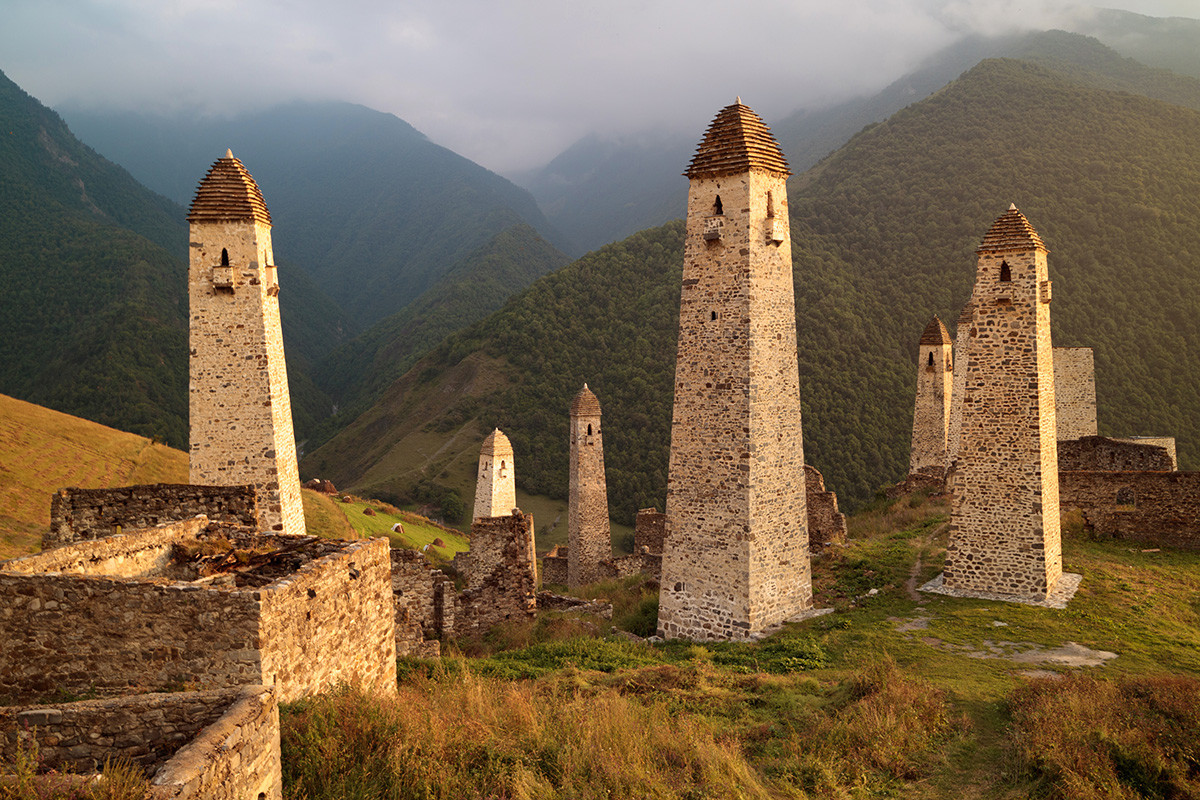The mysterious towers of the Caucasus
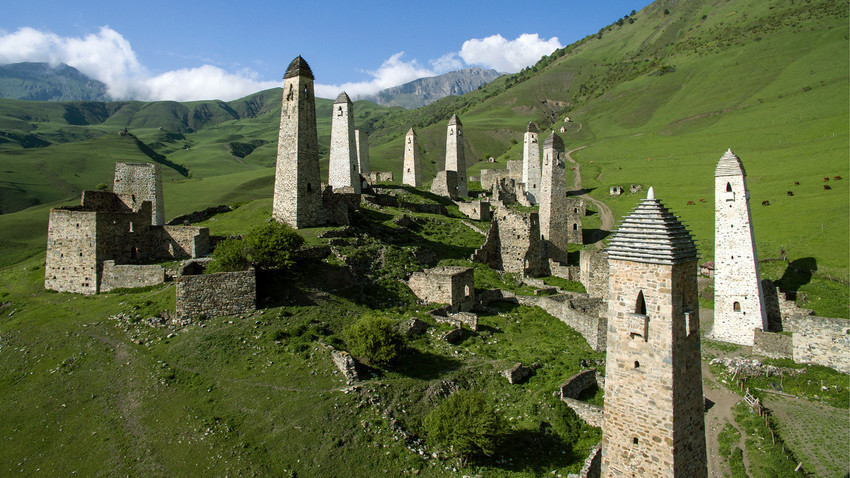
Erzi, a complex of medieval Ingush towers, in the Caucasus Mountains, Dzheirakh District, Ingushetia
Mikhail Japaridze/TASS
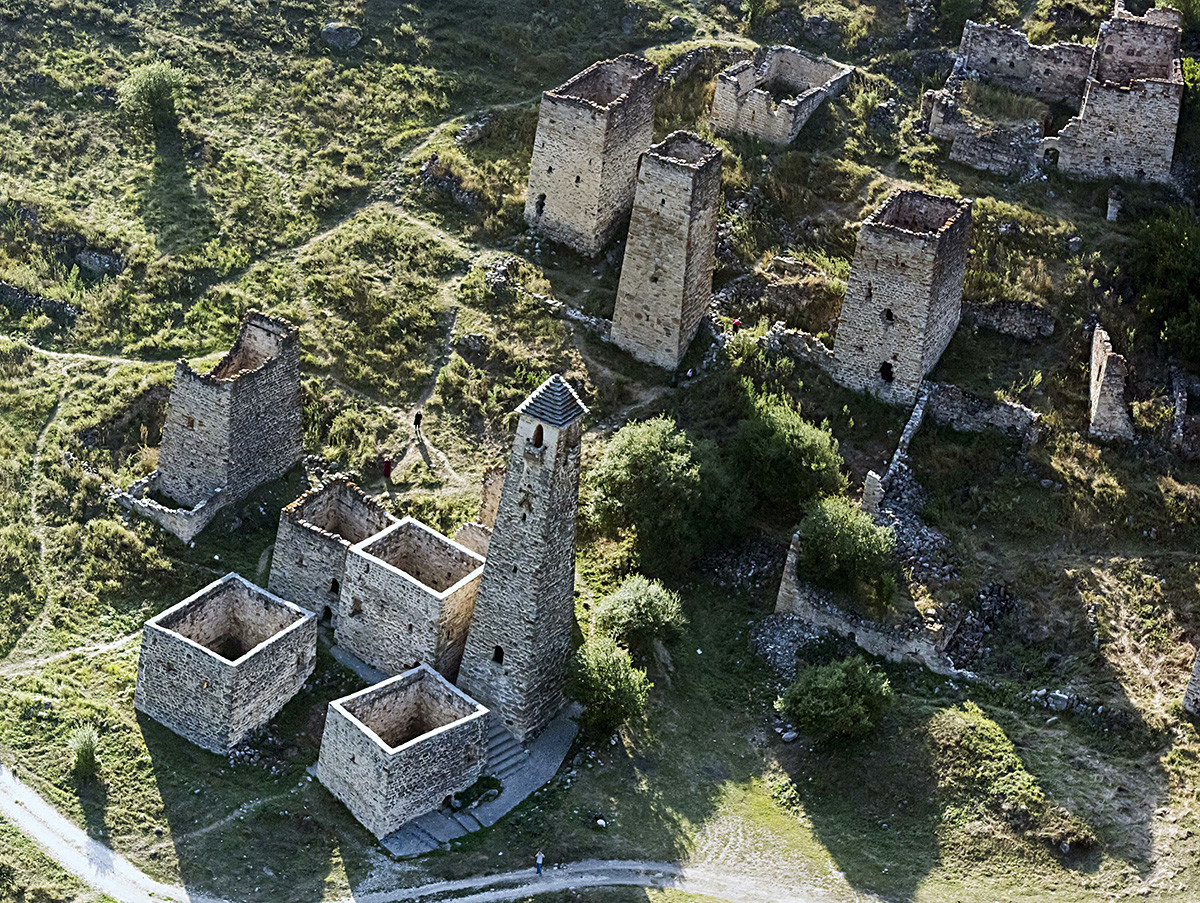
Russia, Ingushetia, Dzheyrakhsky District.
Serguei Fomine/Global Look PressIngush, Chechen, and Vainakh people, who live in the North Caucasus, part of the Russian Federation, probably constructed the first towers even before Christ.
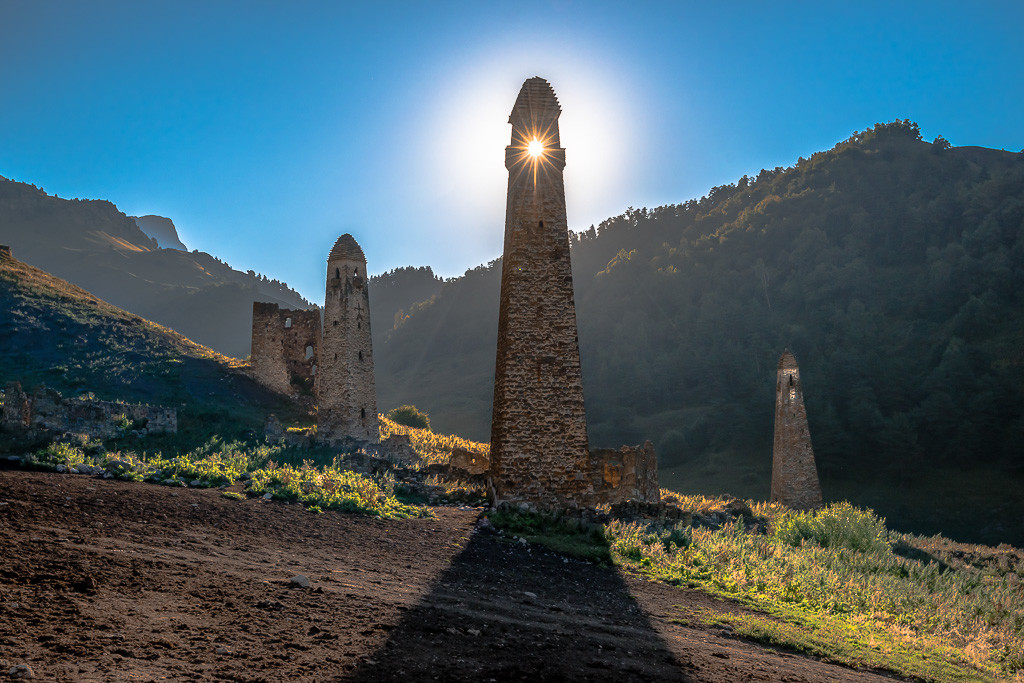
Towers in the ancient town of Niy, Ingushetia, Dzheyrakhsky District.
Timur Agirov (CC BY-SA 4.0)Approximately around the 13th-16th centuries, North Caucasus saw a brief revival of tower culture.
Ingush villages had big rectangular towers for living and tall towers for defense. Ingush, Vainakh and Chechen towers differed in architecture, but not much. The stones were fastened using lime mortar, but sometimes, the dry stack was used.
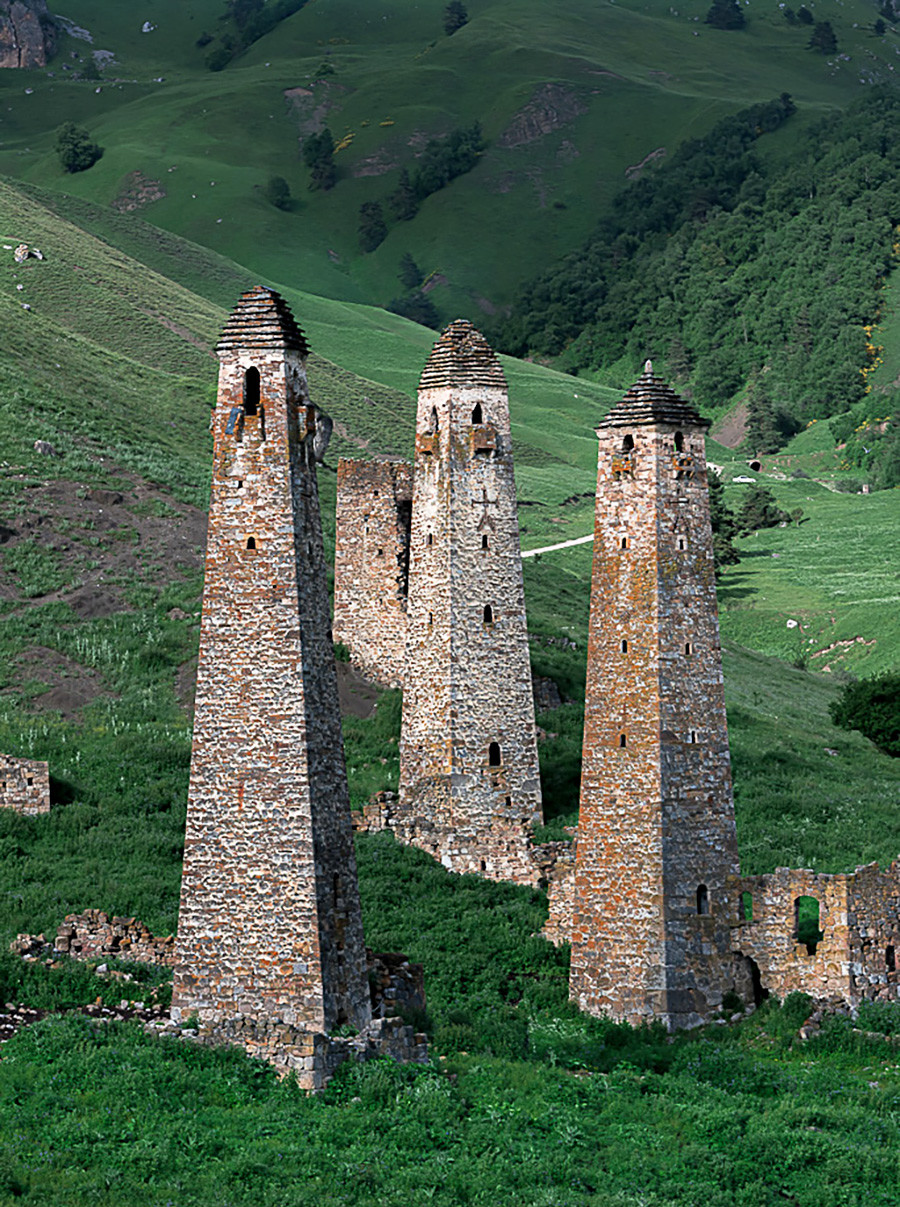
Towers in the ancient town of Niy, Ingushetia, Dzheyrakhsky District.
Timur Agirov (CC BY-SA 4.0)There were strict rules for building an Ingush tower. It was to be finished in 365 days, without fail. And every well-to-do family in the village was obliged to build a tower.
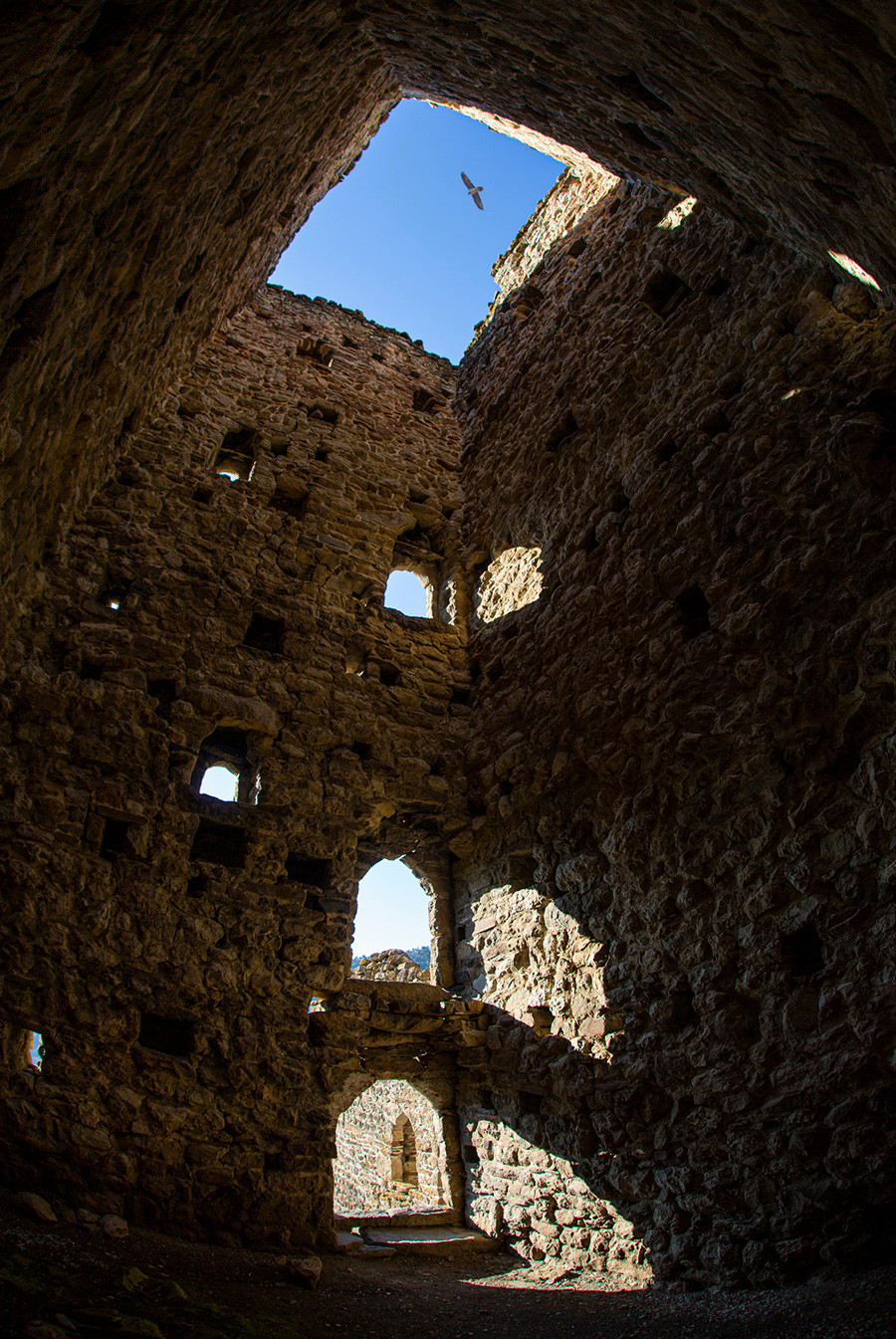
The insides of an Ingush tower (each level had wooden floors, now missing)
Legion MediaTowers were about 10-12 meters high. The first level housed stables and cowsheds. Floors and ceilings were wooden. The second level was meant for the living space. The upper level was a “guest” floor, but could also be used for defense.
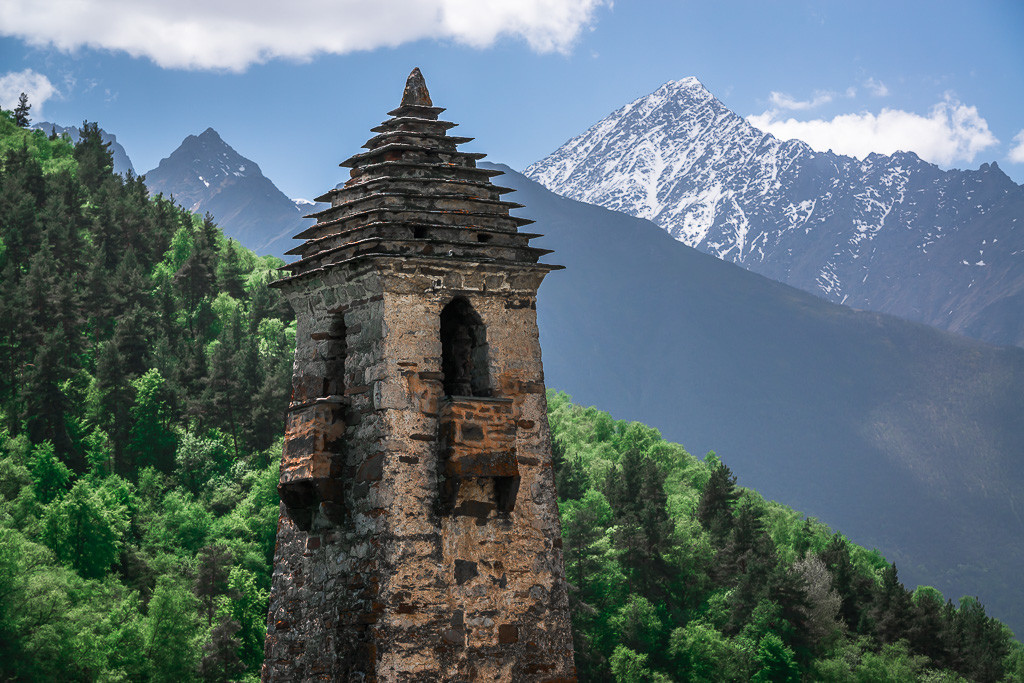
Towers in the ancient town of Khani, Ingushetia, Dzheyrakhsky District.
Timur Agirov (CC BY-SA 4.0)What seems like balconies are actually defensive vantage points. These “balconies” don’t have floors and were used for rolling stones and pouring hot liquids down at the attackers, while the stone enclosure of the “balcony” protected the defenders from attackers’ arrows.
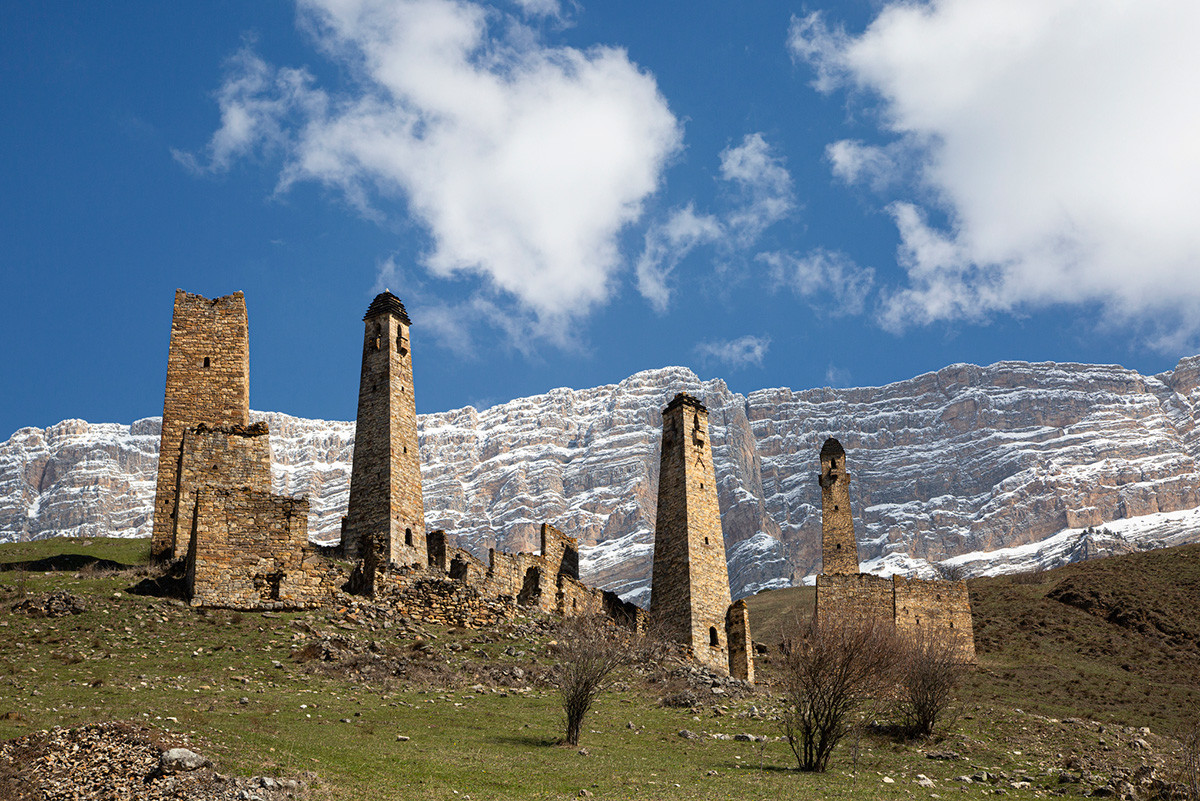
Tower complexes of the Dzheyrakhsky gorge of Ingushetia in the spring
Legion MediaThese towers were meant mostly for defense, but families also lived inside.
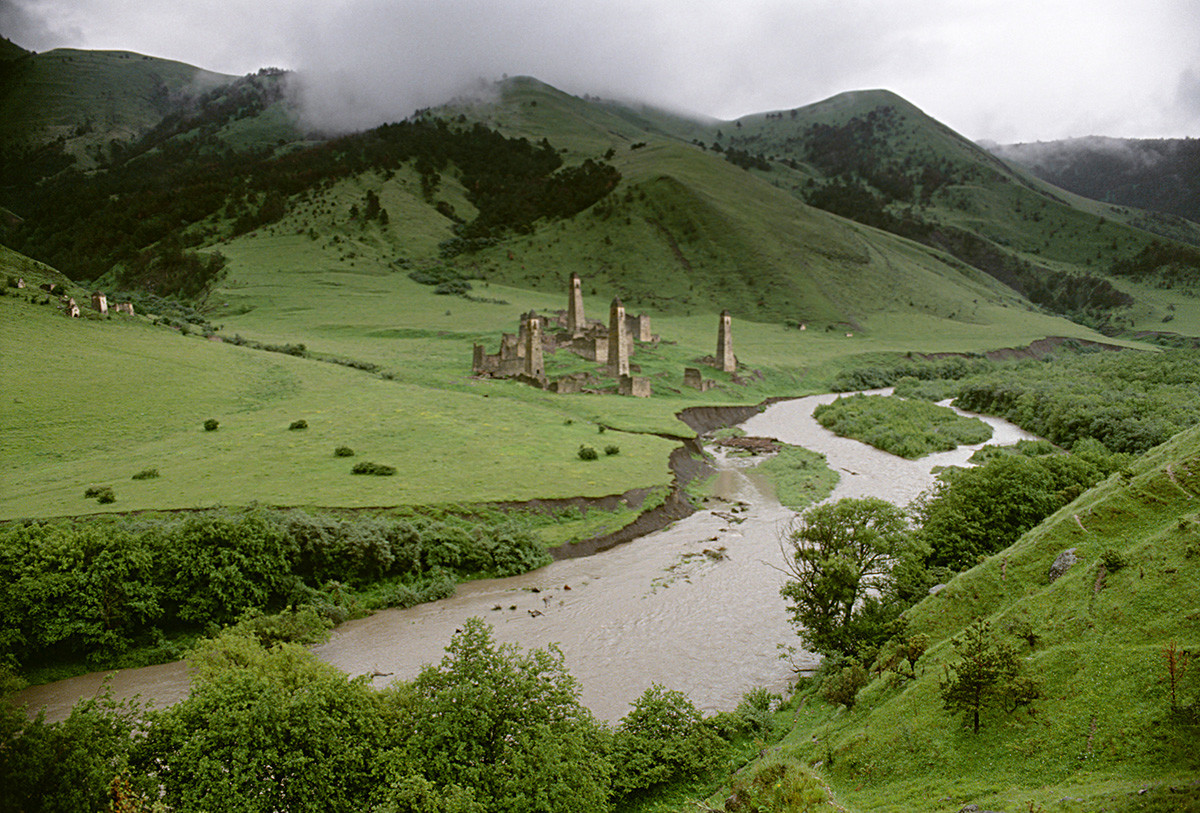
Torgim, an Ingush village in the Assi valley that was thriving in the 16th and 17th centuries.
Alexander Polyakov/SputnikTower villages were close to each other, so towers could also be used for communication using signal fire, so that all neighboring villages could be quickly informed about an enemy approaching.
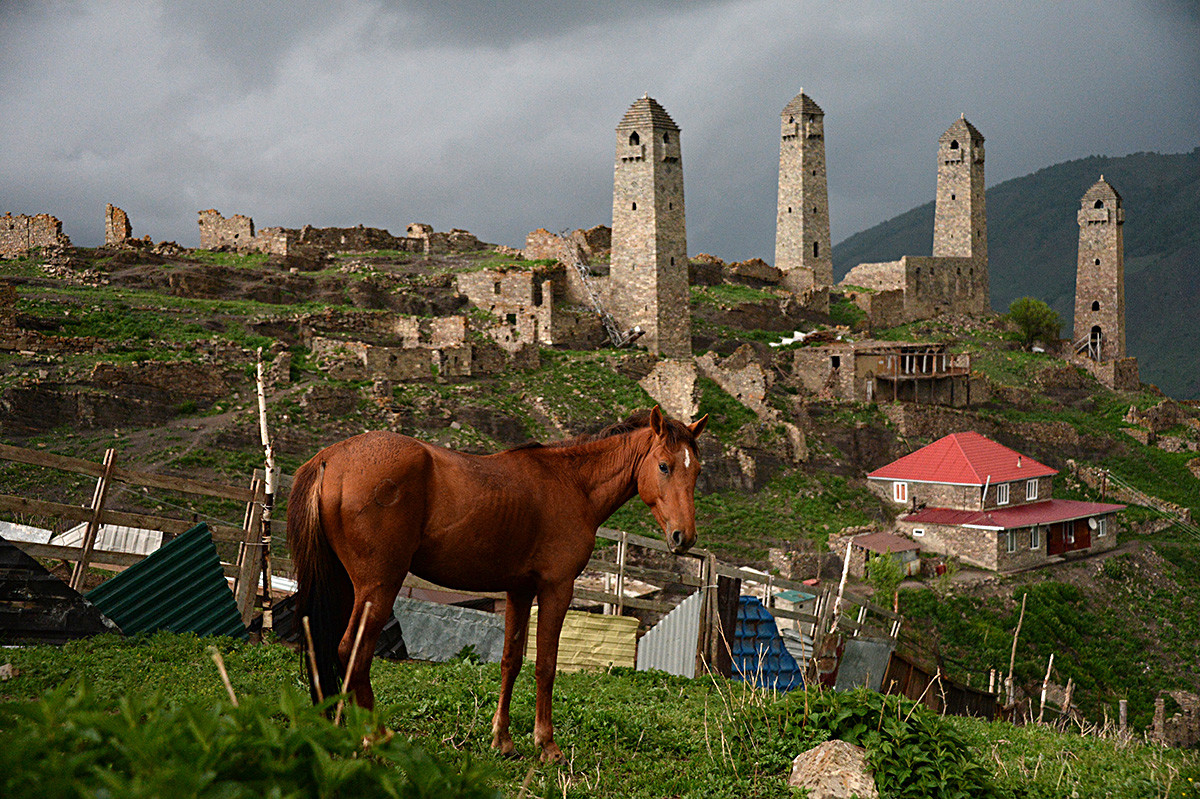
Battle towers in the village of Sharoi.
Said Tsarnaev/SputnikThe Ingush people believe towers embody their national spirit and the pursuit of beauty. Each tower bears spiritual symbols of their builders and the families that financed their construction. Over 30 Ingush towers have yet to be properly studied.
If using any of Russia Beyond's content, partly or in full, always provide an active hyperlink to the original material.
Subscribe
to our newsletter!
Get the week's best stories straight to your inbox
